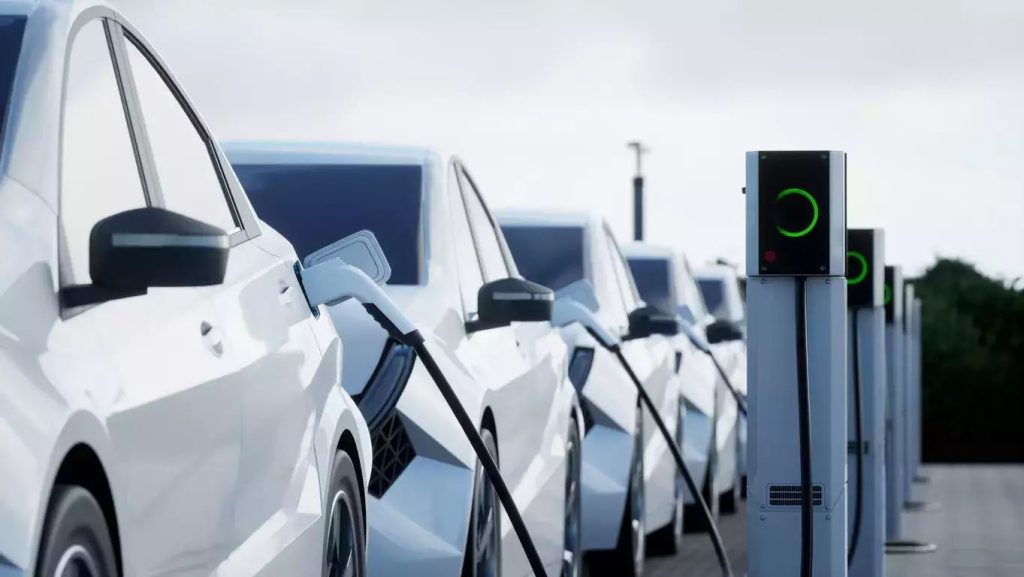Context:
Recently, the Government introduced a policy to promote the manufacturing of electric passenger cars in India.
Key Highlights of the Policy
- The Government of India has approved this scheme to promote India as a manufacturing destination so that e-vehicles with the latest technology can be manufactured in the country. The policy is designed to attract investments in the e-vehicle space by reputed global EV manufacturers. The approved applicants will be required to setup manufacturing facilities in India with a minimum investment of Rs. 4,150 crore (USD 500 million) for manufacturing of e-4W (4 Wheelers) with no cap on maximum Investment.
- The manufacturing facility(ies) shall be made operational within a period of 3 years from the date of issuance of approval letter by Ministry of Heavy Industries (MHI) and achieve minimum Domestic Value addition (DVA) of 25% within the same period.
- Domestic value addition (DVA) during manufacturing: A localization level of 25% by the 3rd year and 50% by the 5th year will have to be achieved from the date of issuance of approval letter by the Ministry of Heavy Industries (MHI).
The applicant will be allowed to import Completely built units (CBUs) of e-4W manufactured by them, with a minimum CIF value of USD 35,000, at a reduced customs duty of 15%. It would be applicable for a period of 5 years
- At present, CBU vehicles priced at more than $40,000 attract a 100% duty while those below $40,000 are subject to 70% tax.
- Not more than 8,000 EVs per year would be permissible for import under this scheme. The carryover of unutilized annual import limits would be permitted.
- Tenure of the Scheme will be 5 years or as notified by the Government of India.
- The Scheme will be implemented through a Project Management Agency (PMA) which will be responsible for providing secretarial, managerial and implementation support and carrying out other responsibilities as assigned by Government of India
- The company’s commitment will have to be backed by a bank guarantee from a scheduled commercial bank in India equivalent to the total duty to be forgone during the scheme period.
- The Bank guarantee will be invoked in case of non-achievement of DVA and minimum investment criteria defined under the scheme guidelines

Significance of the scheme
NITI Aayog has projected that by the year 2030 the penetration of various categories of EVs is likely to be as follows:
- 35-40% for 2 wheelers
- 9-11% for private 4 wheelers
- 20-25% for shared 4 wheelers
- 13-16% for buses.
- Electric vehicles can help reduce carbon footprint and achieve the goal of getting to net-zero emissions by 2070 for India, under the United Nations Framework Convention on Climate Change (COP 26)
- Access to Latest Technology: The scheme will provide Indian consumers with access to cutting-edge technology, enhancing transportation efficiency and reducing reliance on traditional fossil fuel-powered vehicles.
- Strengthening the EV Ecosystem: Encouraging competition among EV players leads to increased production volumes, economies of scale, and lower production costs. It will contribute to the growth and sustainability of the electric vehicle ecosystem in India.
- Reduction in Crude Oil Imports: The scvheme will help in reducing India’s dependence on imported crude oil. It will result in a lower trade deficit and enhance the country’s energy security and self-sufficiency.
Other similar initiatives:
Faster Adoption and Manufacturing of Hybrid & Electric Vehicles Scheme:
- Ministry of Heavy Industry (MHI) rolled out a scheme for Faster Adoption and Manufacturing of (Hybrid &) Electric Vehicles (FAME) in 2015.
- The Phase II of the FAME scheme (FAME II) was launched in 2019 with a budgetary layout of Rs.11,500 crore. The scheme provides upfront subsidy to purchasers of EVs so as to reduce their cost of acquisition.
- PLI Scheme for Automobile and Automotive Components (PLI-Auto): It was launched by the Ministry of Heavy Industries (MHI) in 2021 to promote domestic manufacturing and draw investments into the value chain of the automotive manufacturing industry
- PLI Scheme for Advanced Chemistry Cell (PLI-ACC): This scheme was launched by MHI to incentivise manufacturers of advanced chemistry cells. This scheme aims to build a local manufacturing capacity of 50 GWh, out of which 30 GWh has already been subscribed.
- State Policies: Currently, more than 22 states and UTs in India have dedicated EV policies
Challenges to EV Manufacturing in India:
- Limited Battery Manufacturing: India heavily relies on imported batteries, posing supply chain vulnerabilities and high costs.
- Infrastructure Investment Needed: Expanding domestic battery capacity requires substantial R&D and infrastructure development investment.
- Skilled Workforce Shortage: Limited expertise in critical areas like battery technology and software development hampers EV manufacturing growth.
- Fragmented Supply Chain: The fragmented EV supply chain makes quality control and supply chain management challenging.
Way Forward:
- Promote Domestic Battery Production: Government incentives and subsidies should encourage setting up battery manufacturing plants in India.
- Standardise Charging Infrastructure: Develop standardised charging infrastructure to facilitate easy EV charging across locations.
- Enhance Skilled Workforce: Implement training programs to develop skills in battery technology and power electronics.
- Streamline Supply Chain: Invest in infrastructure and foster collaboration among suppliers to streamline the EV supply chain.

